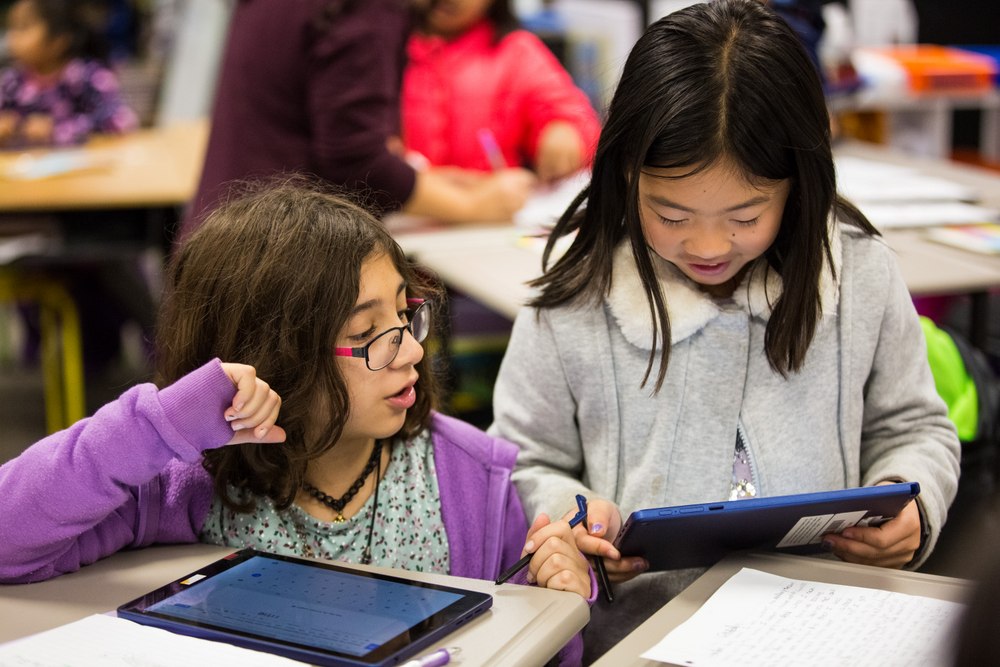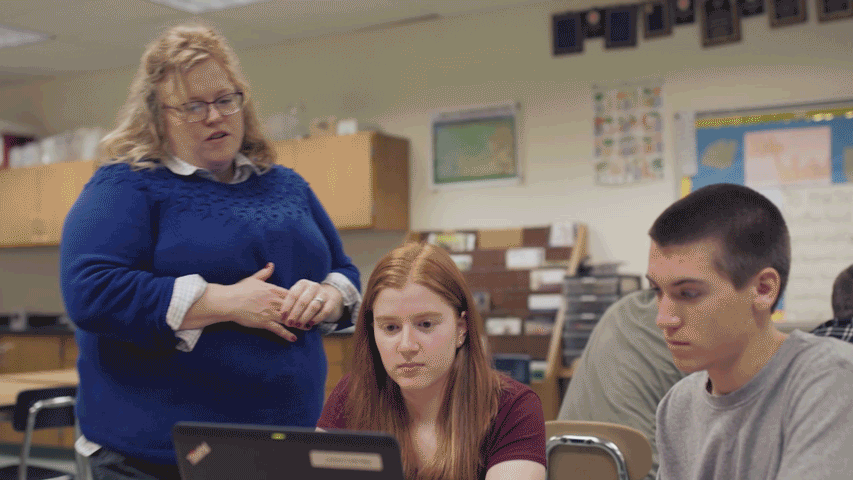On the first day of ISTE, Google for Education gives to you: 12 updates to help teachers save time and spark creativity in their students. By releasing educators of time-consuming tasks, these new features and tools will enhance teachers’ ability to organize courses, increase collaboration with students, and unleash creativity in the classroom. Stay tuned for a deeper look at some of these announcements throughout this week.
1. Locked mode in Quizzes in Google Forms
To keep students focused and distraction-free during tests and quizzes, we’re launching locked mode in Google Forms this fall. Available on managed Chromebooks, locked mode prevents students from navigating away from the Quiz until they submit their answers. Teachers will be able to enable locked mode with a simple checkbox, giving them full control over assessments.

2. Now Classroom works like you do
We’re improving Classroom to give teachers more control over how they organize everything from assignments to class rosters. It’s the same Classroom that educators know, with new pages designed to help teachers and students find what they need faster than ever.
This fall, we’re introducing the Classwork page, which lets teachers organize assignments and questions by grouping them into modules and units. Teachers will be able to create and manage assignments and questions from the Classwork page. This gives class content its own space in Classroom, and allows the Stream to be used for class conversation.
We’re also introducing a People page to give teachers a unified place to manage students, co-teachers and guardians, and a new Settings page where teachers can add a class description, change the course code, and control overall Classroom settings.

3. Create Quizzes from Classroom
Soon, teachers will be able to create and assign a Forms Quiz directly from Classroom—saving educators time and streamlining the assignment process. Quizzes lets teachers create questions, grade by question or by student, auto grade checkbox and multiple choice grid questions, and include feedback to answers for a personalized learning experience. And teachers can import grades from Quizzes right back into Classroom.

4. Chromebooks, now in tablet form
The Acer Chromebook Tab 10, the first tablet running the same reliable operating system as Chromebooks, is now available. Teachers told us they wanted the same speed, ease of use, manageability, shareability, security and affordability that they’re used to with Chromebooks—but in a lightweight, durable tablet. With built-in stylus, cameras on both sides, ultra-fast USB-C charging, a wide array of apps, Expeditions VR, and Expeditions AR this fall, the Acer Chromebook Tab 10 brings learning to life.

5. The Chromebook stylus by STAEDTLER
We’ve partnered with STAEDTLER to create a stylus that’s useful for both teachers and students—and doesn’t break the bank. This stylus requires no pairing or charging, and is designed with affordability in mind. Using the stylus, educators can give visual feedback in Classroom, as well as assign PDF worksheets that students can annotate by hand. The STAEDTLER Noris digital for Chromebook works with a wide array of apps and will be available later this summer.

6. Get your class jamming with Jamboard
Jamboard, the interactive whiteboard, is coming to the classroom with new educational pricing and the free companion app. The app works with or without a Jamboard unit, and runs on all touch and mobile devices, including convertible Chromebooks supporting Android Apps and the Acer Chromebook Tab 10.
7. Learning with virtual reality
Students and educators have been daydreaming about making their own virtual reality experiences, and now that’s possible with Tour Creator. This new VR tool lets anyone easily create virtual reality tours using footage from 360° cameras or the huge library of existing Street View content and view their tours on Poly. You can customize your tour using templates, ambient audio, and narration support to help teacher and students craft the perfect tour. And because Tour Creator is a web-based application, anyone can use it to create VR experiences—no prior knowledge or experience necessary.

See how one school in Lancaster, PA, is using Tour Creator to share why they love where they live with new friends across the world.
8. Making math with Google Earth
Ever wonder how far your hometown is from the North Pole? Or if the Forbidden City is bigger than the Palace of Versailles? Starting today, educators can make their math lesson a bit more fun by asking students to measure distances between cities or the area of historical sites—right in Google Earth. The new Measure Tool is now available onChrome today, onAndroid this week and coming soon to iOS. We’re also adding new teacher-authored stories to Google Earth, like Buildings Inspired by Nature, Modern Human Migration and Blue Gold. Our Lakes. Our Lives., to help students understand the wider world around them.
9. Introducing the Teacher Center
Just in time to check off professional development from summertime bucket lists, we’re unveiling our new Teacher Center. Formerly called the Training Center, this updated hub is a one-stop-shop for training materials, resources, certifications and communities of educators. Teachers can search Google’s library of resources to find exactly what they need, when they need it.
10. CS First curriculum updates
For teachers looking for new Computer Science (CS) curriculum for the upcoming school year, our CS First curriculum is completely free and now aligned with ISTE and CSTA standards. Video lessons guide students in grades 4-8 through engaging activities where they both learn and practice basic computer science principles across themes such as art, music and fashion. Teachers don’t need to have any CS education or experience to teach CS First, as the curriculum includes lesson plans and supporting materials that are free and available to anyone.
11. New lessons in Applied Digital Skills
Applied Digital Skills is a free, project-based curriculum that includes video lessons designed to teach students the digital skills they’ll need for the future. We’ve added brand new units for middle and high school students that teach practical skills like how to research colleges or create a resume in Google Docs. The full curriculum includes several modular lessons that are flexible enough to use in just one class period, or across an entire semester, and can now be assigned directly from Classroom.
12. Be Internet Awesome: Program updates and two new languages
Be Internet Awesome helps kids learn how to be safe, confident explorers of the online world. Based on a ton of helpful feedback we’ve received from educators, we’re excited to share expansions to our educator curriculum, an updated Interland game that better reinforces our lessons, and new resources for educators and parents, including interactive slides built with Pear Deck. Be Internet Awesome is also now available in two new languages—Spanish and Portuguese—across the U.S. and Latin America.

We hope these updates help educators cultivate an engaging, learning-driven classroom and help unleash creativity in their students. If you’re at ISTE this week, visit us at booth #1602 to learn more, say hello to our team and test out our latest tools. You can also follow along all week for updates on Twitter and Facebook.
We look forward to collaborating with you to make the 2018-2019 school year the best one yet! Until then, we wish you a happy, well-deserved summer break.